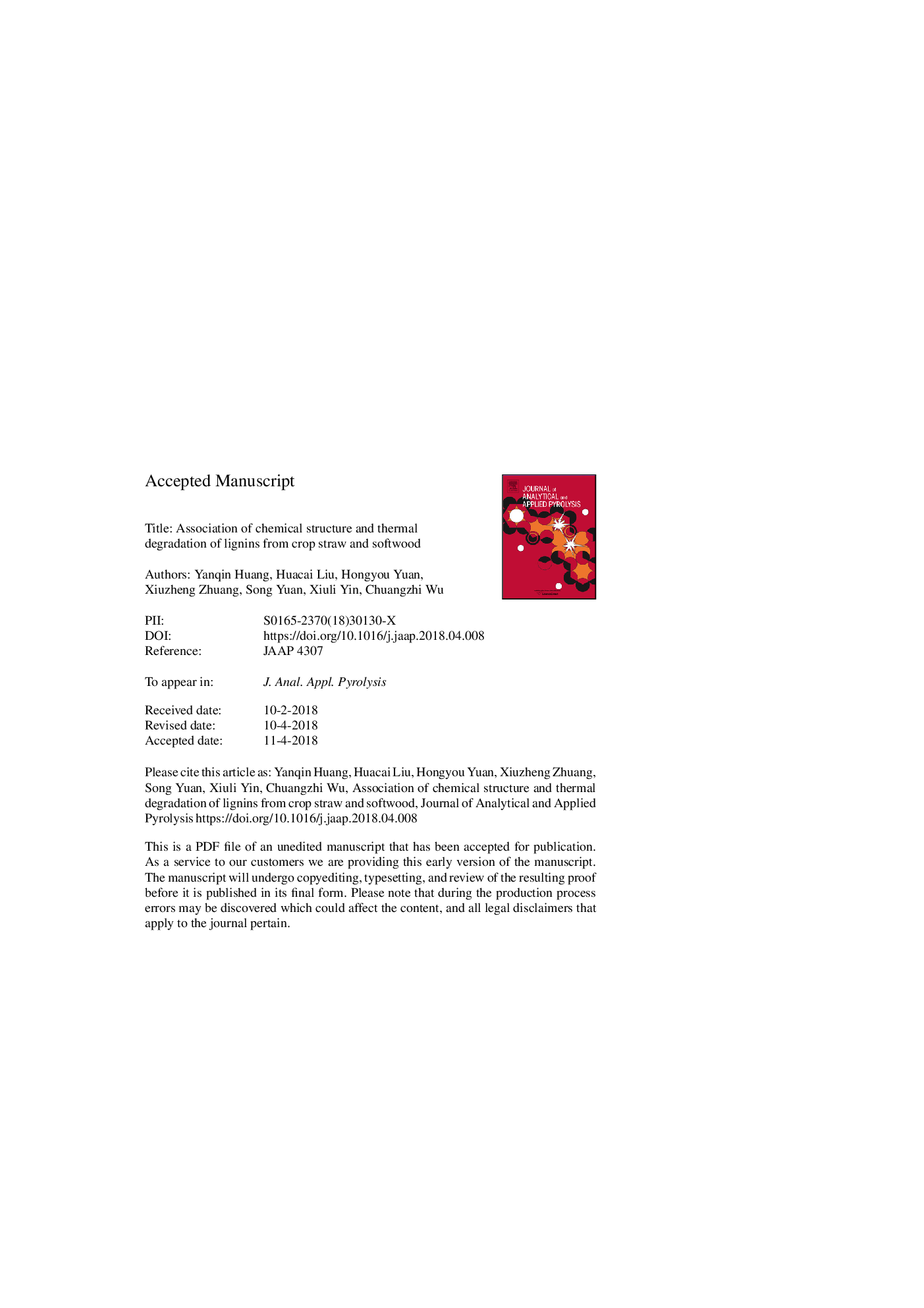| Article ID | Journal | Published Year | Pages | File Type |
|---|---|---|---|---|
| 8954822 | Journal of Analytical and Applied Pyrolysis | 2018 | 38 Pages |
Abstract
The structural characteristics of crop straw (wheat straw, WS) lignin and softwood (pine wood, PW) lignin prepared using the enzymatic/mild acid hydrolysis method (EMAL) were deeply elucidated by FTIR (Fourier transform infrared), 13C-1H 2D-NMR (nuclear magnetic resonance), and quantitative 31P-NMR combined with DFRC (derivatization followed by reductive cleavage). Then, the association of chemical structure and thermal degradation was evaluated by means of TG-FTIR-MS (thermo-gravimetric-FTIR-mass spectrometry) and Py-GC/MS (pyrolysis-gas chromatography/mass spectrometry). The results showed that the functional groups and aromatic unit compositions of WS-EMAL were distinct from those of PW-EMAL, identifying the former as a HGS-lignin and the latter as a typical G-lignin. Both WS-EMAL and PW-EMAL were mainly cross-linked by β-O-4 linkages but had different contents. The amount of uncondensed β-O-4 linkages in WS-EMAL was 1168â¯Î¼mol/g, which was lower than that in PW-EMAL (1297â¯Î¼mol/g). These distinctions in structure caused a large difference in thermal stability, evolution behavior of typical volatiles and selectivities of G-, S-, H-, C-phenols between the two lignins. The mechanistic influence of structural features on pyrolysis behavior was intensively discussed, and a correlation between the two lignins was obtained.
Related Topics
Physical Sciences and Engineering
Chemistry
Analytical Chemistry
Authors
Yanqin Huang, Huacai Liu, Hongyou Yuan, Xiuzheng Zhuang, Song Yuan, Xiuli Yin, Chuangzhi Wu,
